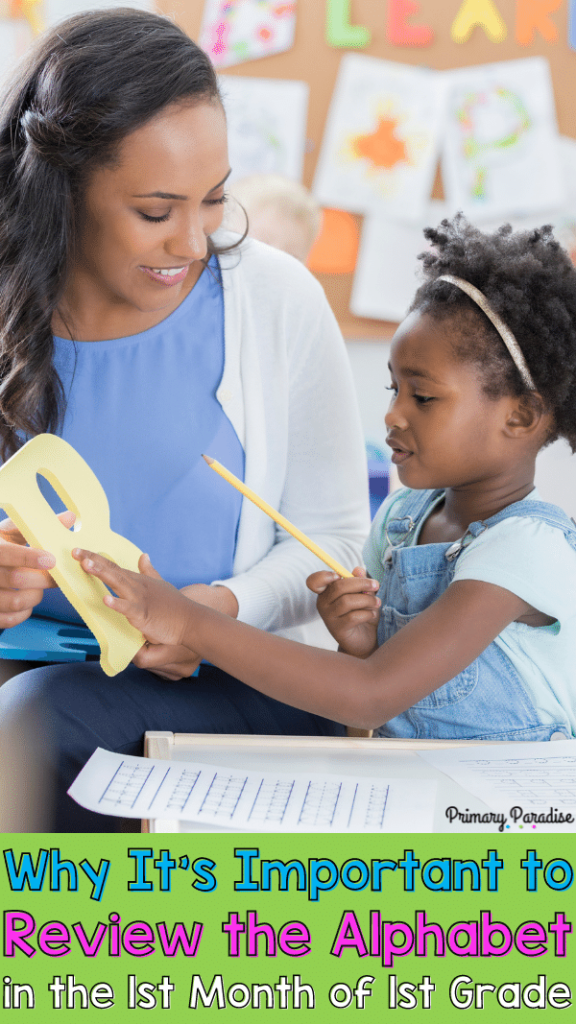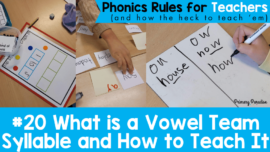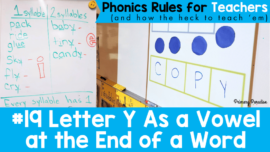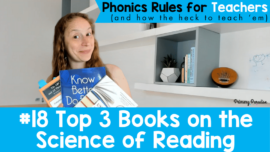Your first grade students hopefully are coming from kindergarten with a solid alphabet letter sound and letter formation knowledge. However, a whole summer has passed, and that’s just always the case. That’s why it’s important to review the alphabet at the beginning of first grade. Here is how and why you should take the time to review letter names, letter formation, and letter sounds before diving into more complex phonics practice in grade one.
Shouldn’t my first graders already know their letter sounds and how to write them?
The answer is absolutely yes. However, it’s never wise as a teacher to assume your students know certain skills. In many cases, you can do a quick assessment to see what they already know. But, when it comes to both letter formation and letter sound knowledge, I find it best to take a short amount of time to review at the beginning of the school year. Here’s why.
Single letter sounds are the basic foundation of beginner reading skills, after oral phonological awareness skills. If students don’t have a very firm foundation of their single letter sounds, reading simple CVC words like cat and bus will be a struggle. If they don’t have a firm foundation of short vowel sounds, then beginning to focus on long vowels or other vowel sounds is going to be too much too soon. Taking the time to review single letter sounds with an alphabet review at the beginning of the year will hopefully negate the need to stop and review letter sounds later on. Of course, some kids will need extra work, but for the majority of the students who received a solid foundation in kindergarten, a quick review will likely be enough.
How to do an alphabet review at the beginning of first grade
The best way to review letter sounds and letter formation is, in my opinion, like this.
- Quickly– one letter a day is a good pace, or potentially even quicker depending on your students
- Consistently– reviewing each letter the same way each time helps students learn a routine and anticipate what will come next
- Thoroughly– reviewing all parts of the letter- name, what it looks like, sound, formation, and words that begin and end/include that letter- is the way to go.
What should my alphabet review look like?
Although there’s not one set way to review letter sounds, letter names, and letter formation, here is how I do it. I create a book with a set template and routine to make it simpler. The following format hits the 3 points above- quick, consistent, and thorough. It also covers letter names, letter sounds, letter formation, and words that begin with or include that letter.
Important Things to Remember
Please note, this should be completed as a guided practice. Simply passing out a letter worksheet for students to do independently each day defeats the purpose of a review. Overall, this should take about 10 minutes for each letter.
It’s helpful to review the letter sounds in the order your phonics curriculum teaches them. This is because it *should* focus on the most frequent letters first. I would not review letters in alphabetical order as that isn’t the most useful sequence. If you’re lost on what order and don’t have a phonics program to follow, here is a sequence that is fairly common. s a t i p n c k e h r m d g o u l f b j z w v y x q (I teach q with the u- qu).
Step 1- Name and Sound
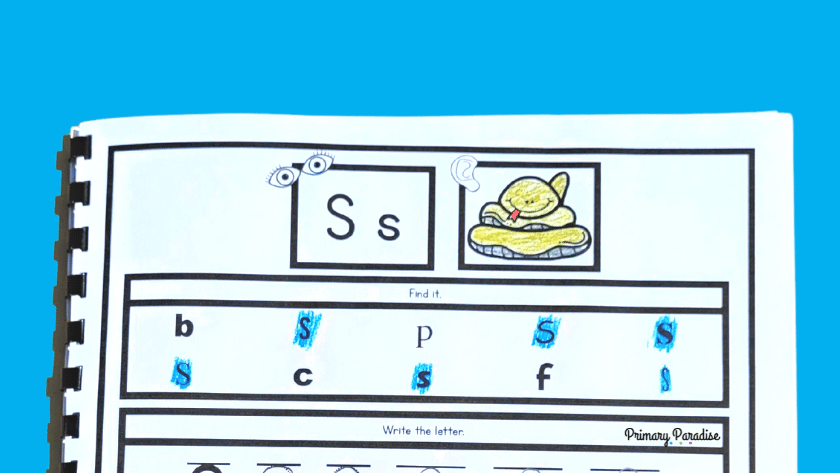
First, review what the letter looks like, the letter name, and the sound the letter makes. It can be very helpful to use a picture cue to help students recall the sound- for example a sun or a snake is a great cue for the s sound. Although some teachers have learned that students don’t need to learn the letter name, just the sound, this is actually not true. Research shows it’s best to learn the letter name and sound together.
That being said, it’s important for students to clearly know what the name and sound are each used for. I always explain it like this. Letters have names, just like you have a name. It tells who you are, but it doesn’t tell us what you do. It’s the same with letters. The name tells us which one, but the sound is “what they do”. An S is called S but it represents the sound /s/.
It can be extremely helpful to include a picture cue to help students recall the letter sound.
Step 2- Find It
Once we show our students what a letter looks like, it’s helpful for them to understand that, even though there is a set way to make the letter, it can look a bit different at times. This is important because often times the books and texts our students will read will not always be in a “student friendly” font. I find it helpful to have them hunt for the letter in different fonts. We also talk about the different ways a letter can look. It’s important to make it clear that they should write the letter the correct, standard way. However, they also need to be able to recognize variations.
Step 3- Write It
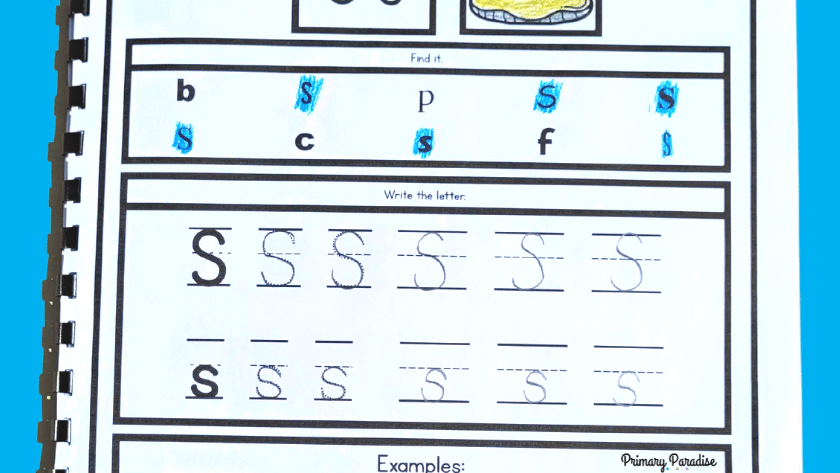
Next, we can model correct letter formation for both upper and lowercase versions of the letter. Some things to look out for are students who are consistently forming letter from the bottom. Be sure to emphasize the importance of forming letters from the top. Also, be aware that left handed students might struggle a bit more with letter formation, and might need some extra guidance. I like to use these handwriting videos (also available on TpT here). Give students the opportunity to practice both upper and lowercase letters. I like to have them circle their favorite/best one. Make a note of which letters specific students are struggling with so you can spend extra time on this in small groups or one-on-one.
Step 4- Brainstorm Examples
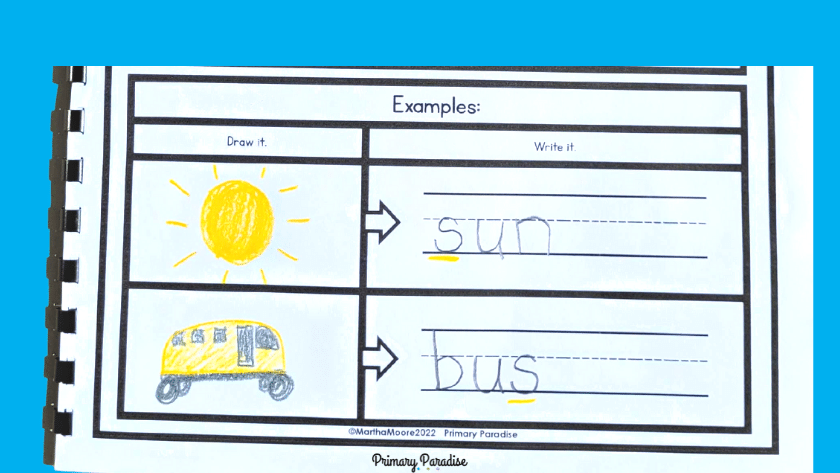
Then, we can brainstorm examples of words with the letter in it. I find it helpful to have students draw a picture and then write the word. . This could be completed together, where everyone has the same examples. You could also create a bank of choices as a class, or you could ask students to come up with their own. I find it helpful to include an example of a word with the letter as the beginning sound and another with the letter as a middle or ending sound. For x, for example, I only include letters with an ending sound because words with x in the front don’t make the typical /x/ sound. Words I like to use for x are fox, box, and mix.
Step 5- Add It to Your Alphabet
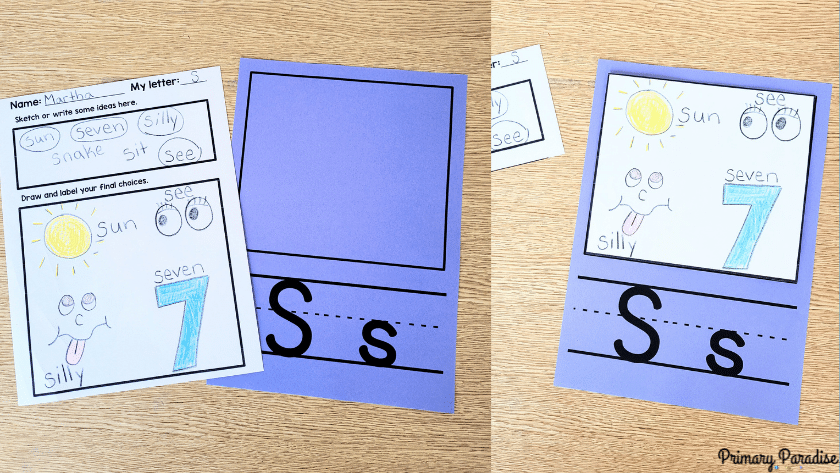
Last, I have my students help create my alphabet in my class. This can be incorporated in our letter sound review. I start with a blank template up at the beginning of the school year. Each time we review a new letter, I pick a student to create our alphabet picture cue for our class alphabet. The beauty of doing it after we review means it will be easy for the student to come up with a picture. If you have more than 26 students, you can have some students work in pairs and include two picture cues. If you have a few less than 26 students, you could do some of the letters as examples before passing the job off to your students. Be sure to keep track of which students have had a turn so everyone gets a chance. You can find this template in my free resource library for email subscribers.
What do you do with the finished alphabet review book?
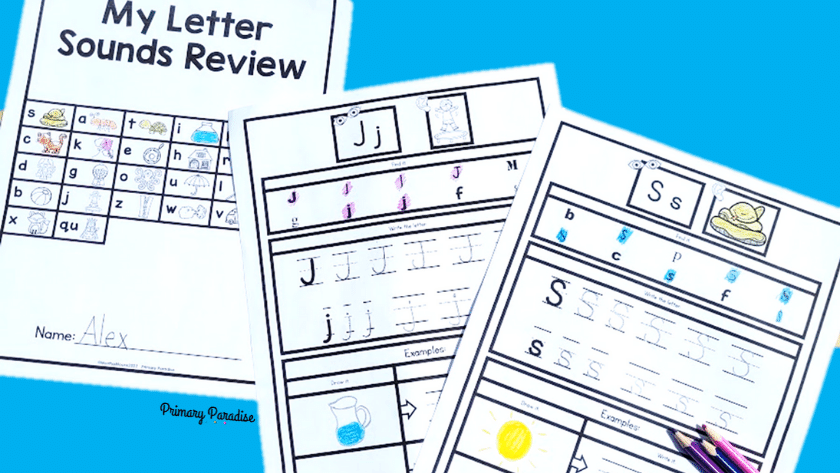
Once we’ve reviewed all single letter sounds, we can either keep it as a tool to use in the classroom or send it home as a tool for reading at home. I personally prefer to send it home so parents. This allows them to see how their child has learned to pronounce letter sounds and write the alphabet.
Where can I find a good template for an alphabet review?
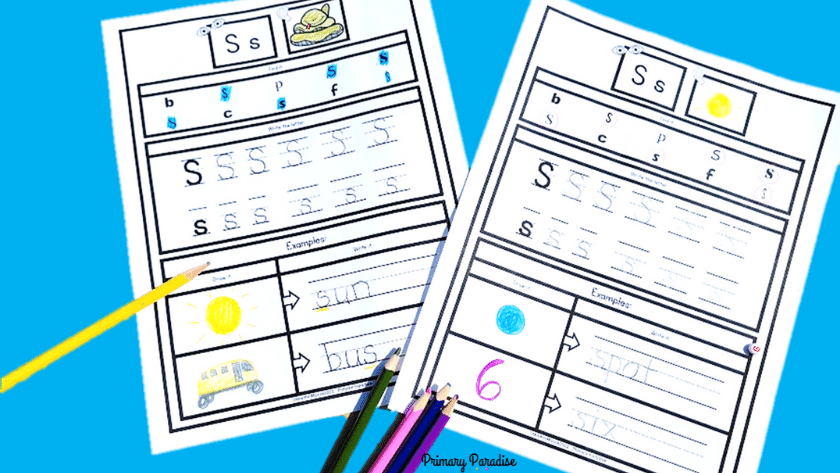
If you’re looking to do a letter sound review, but you don’t want to create your own template, I’ve got you covered! You can use the alphabet review template throughout this post. It includes a version with a picture cue given and a version with the picture cue blank. Simply pick the version you want to use, print, and go.
You can find the alphabet review template in my website shop by clicking on the picture below. You can also find it on TpT here.
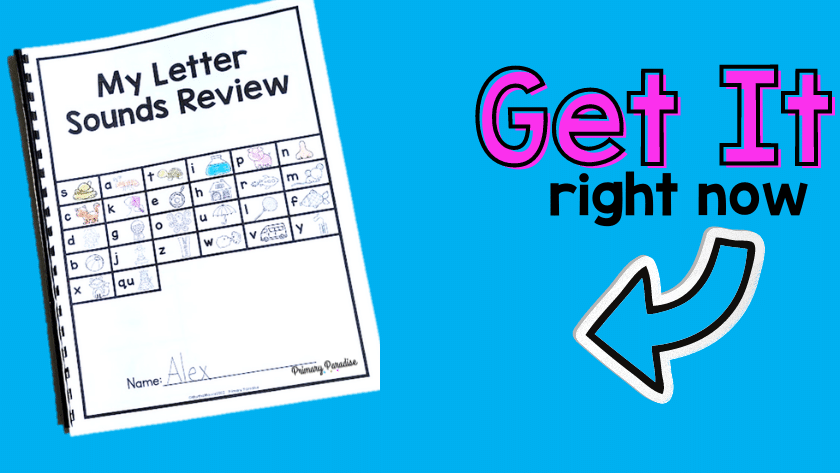
If you enjoyed this, keep reading and learning:
How to Set Up a Classroom without Spending a Ton of Money
A Guide to Running Reading Centers in First Grade
How to Create a Morning Routine that Sets Your Class Up for Success
